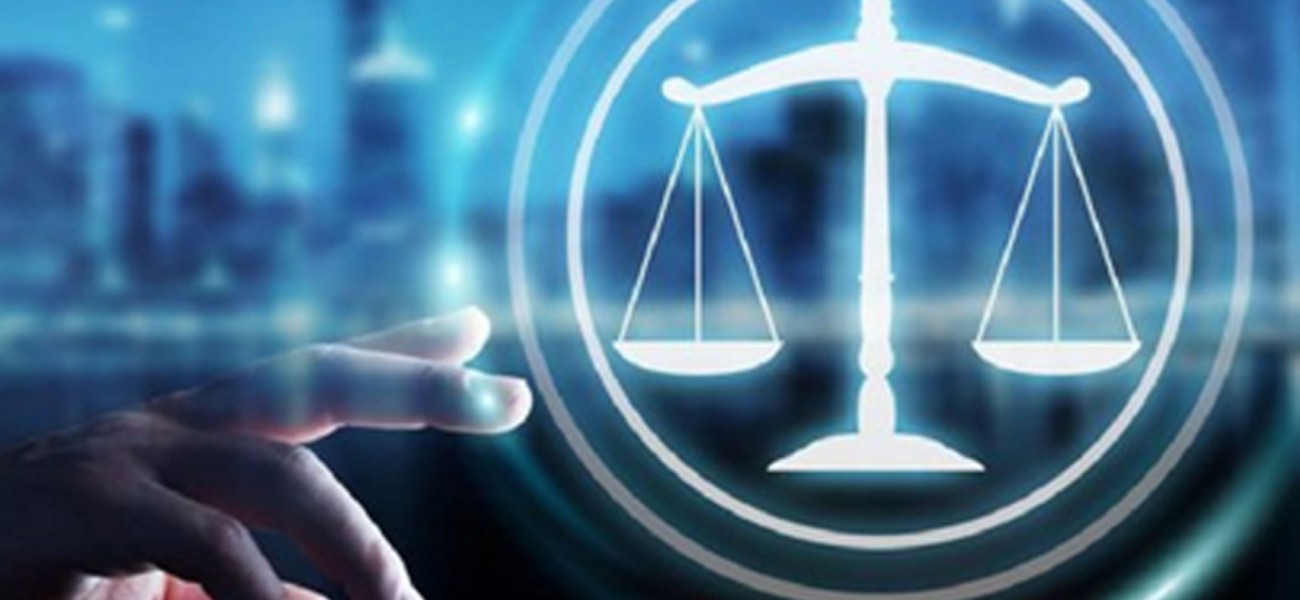INTRODUCTION
In the wake of COVID -19 the day to day workings of the world has been brought to a standstill. However, the Indian Justice delivery system has stood tall and adapted to the new norm with the usage of video conferencing for adjudicating on important matters in the midst of a crisis.
Deriving precedence from the case of State of Maharashtra v. Praful Desai, the Supreme Court issued guidelines for the various High Courts to conduct proceedings via video-conferencing on urgent matters. In the aforementioned case, the court while incorporating electronic evidence under the umbrella of admissible evidence, explored the possibility of virtual courts and their functioning.
Though undoubtedly the need of the hour and an innovative solution to an unprecedented problem, the virtual courts are not free from lacunas and raise more questions than they answer. An imperative question that is raised is whether the virtual courts incorporate the principle of “open courts” which is the very spine of the justice system? A follow-up question that comes to mind considering the procedural aspect of the virtual courts is whether or not live-streaming of court proceedings could be considered an extension of the “open courts” principle.
However, before delving into these questions it is pertinent to evaluate the need for open courts vis-á-vis the role of the judiciary as a stalwart for transparency, accountability, and Rule of Law.
OPEN COURTS PRINCIPLE: THE VERY SOUL OF JUSTICE
The genesis of the principle itself can be traced as far back as 1215 in the Magna Carta which in its clause 40 stated that:
“To no one will we sell, to no one will we refuse or delay, right or justice…”
This clause implies not only the right of a person to approach the court to seek justice but also their right to attend public hearings.
The courts are constitutionally mandated to conduct open court hearings under Article 145 clause 4. The same is envisaged under Section 327 of the Code of Criminal Procedure and Section 153-B of the Civil Procedure Code.
The courts in the case of Naresh Shridhar Mirajkar and Ors. Vs. State of Maharashtra and Ors upheld the need for an open court trial calling it “essential for the healthy, objective and fair administration of justice”.
It is well established that an open court trial is indispensable for ensuring transparency in the workings of the court and accountability of the court for its actions to the public. Judiciary as an organ of a democratic institution bears the responsibility to instill faith and confidence in the rule of law among the citizens of the State and it can do so only when it works ostiis apertis.
As Lord Justice Hewart so poetically put it- “Justice must not only be done but also seen to be done”
Even in the midst of a pandemic, the courts are adjudicating on extremely urgent matters. It is however pertinent that such proceedings be made public as the lack of the same raises important questions regarding the future of the virtual judiciary in the country.
DOES LIVE-STREAMING OF PROCEEDINGS SUFFICE AS “OPEN-COURT”?
The legal standpoint on this particular question was laid down in the case of Swapnil Tiwari v. Supreme Court of India wherein the court pronounced the live streaming of proceedings to be in consonance with and an extension of the open court principle. It further elucidated on the subject by saying that live streaming is an important facet of a responsive judiciary which accepts and acknowledges that it is accountable to the concerns of those who seek justice.
The Court however seems to have deviated from this particular stand when it disposed off the plea filed by Adv. Indira Jaising regarding the live streaming of proceedings during the pandemic, calling it an administrative decision to be taken by the CJI rather than a judicial one. Even though the modalities for implementation of such live streaming had already been laid in the Swapnil Tripathi case, the court refused to pass any order for the same.
Such an approach raises questions on the legal as well as procedural standing of virtual courts. Arguably, live-streaming could be brought under the umbrella of open courts, however, it cannot be used as a substitute for the same.
ARE VIRTUAL COURTS HERE TO STAY?
It is illogical at the very least and naïve at best to say that virtual courts could be a complete substitute for open court hearings. The yawning gap between resources available for video-conferencing and e-filing with lawyers of humble background from rural cities as compared to that of the elite class of big cities is in itself a sufficient argument against the permanence of the system of virtual courts.
The crusaders of virtual courts argue that with the development of technology the reach of the internet is far and wide. Indisputably true as this statement may be, it is pertinent to note that the distribution of the internet, however, is not equal. Where the metropolitan cities like Delhi and Bombay have high-speed internet, parts of the North-east struggle with proper cell reception.
For virtual courts to become a reality, major infrastructural overhaul and technological advancement is required. The widespread lack of digital literacy and training makes it irrational to expect all persons involved in the justice system- the judicial officers, court staff, and advocates- to learn and adapt to the new norm in a matter of weeks.
In addition to the technological incumbrance, the system of virtual courts lacks the required tension that comes with appearing in the Courtroom with ceremonies such as taking an oath in front of a judicial officer. The opportunity that an in-court proceeding allows, for recognition of facial and non-verbal cues during cross-examination, would be lost in an audio-video chat. Such cues, including body language and demeanor of the person on the stand, are often critical in the discovery of the truth during a trial. John Henry Wigmore, a stalwart on evidence law, once said that “cross-examination is the greatest legal engine ever invented for the discovery of truth”. An inability to cross-examine properly inadvertently increases the risk of error.
Replacing such hearings with virtual courts would then eminently decrease the quality of proceedings conducted and inhibit the proper discovery of truth.
CONCLUSION
Technological advancement has become a part of our lives and the judiciary too must incorporate it in its daily workings. The transition, however, needs to be phased, structured, and holistic. In trying times as such, the Indian judiciary has done a commendable job in switching over to an online mode for speedy dispensation of justice. This system, however, must remain limited to the time period of the crisis.
The adversarial system of justice necessarily requires an open court hearing for its proper functioning and as such the same cannot be completely done away with. The integration of technology within the judicial system must be done without affecting the integrity of the proceedings themselves and the dignity of the parties involved.
REFERENCES
- Suo Motu Writ (Civil) No.5/2020, In Re: Guidelines for Court Functioning Through Video Conferencing During Covid-19 Pandemic, https://main.sci.gov.in/supremecourt/2020/10853/10853_2020_0_1_21588_Judgement_06-Apr-2020.pdf
- Writ Petition (Civil) No 1232 of 2017
- Arijit Prasad, Virtual Courts – Can It Replace Open Court Hearings? June 21, 2020, 1:20 pm, https://www.indialegallive.com/top-news-of-the-day/news/virtual-courts-can-it-replace-open-court-hearings.
- Order of the Supreme Court, https://main.sci.gov.in/supremecourt/2019/44623/44623_2019_3_1_20294_Order_04-Feb-2020.pdf
- Pramod Kumar Dubey, Virtual Courts: A sustainable option? Apr 12, 2020, 11:44 AM IST, https://www.barandbench.com/columns/virtual-courts-a-sustainable-option.


